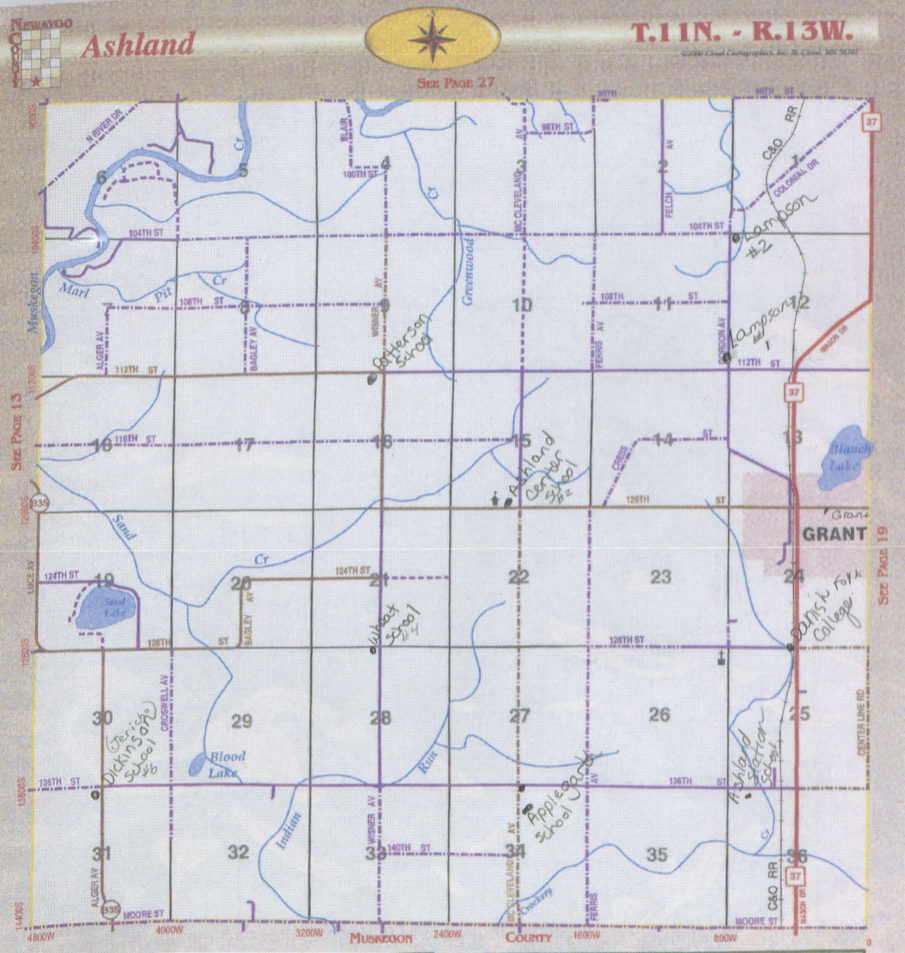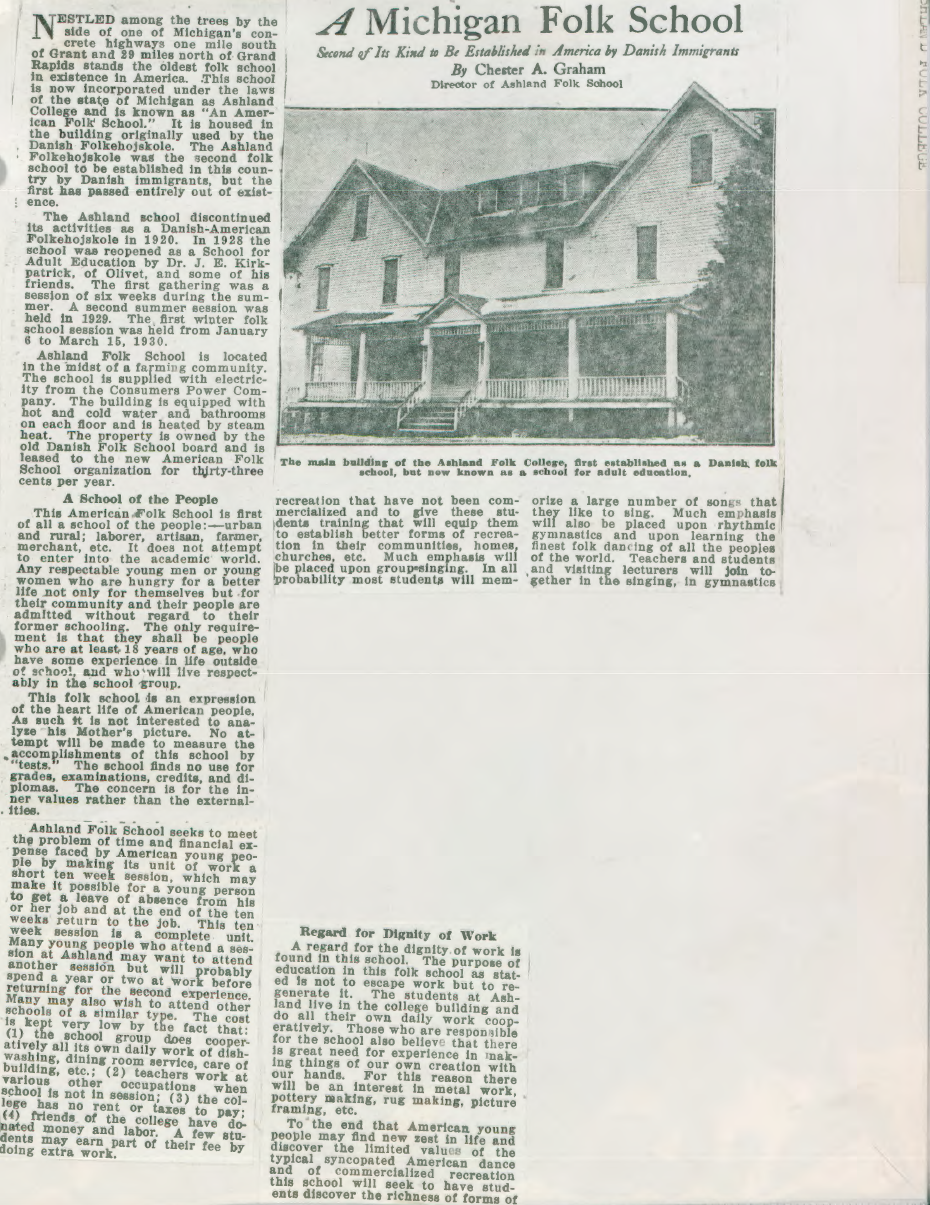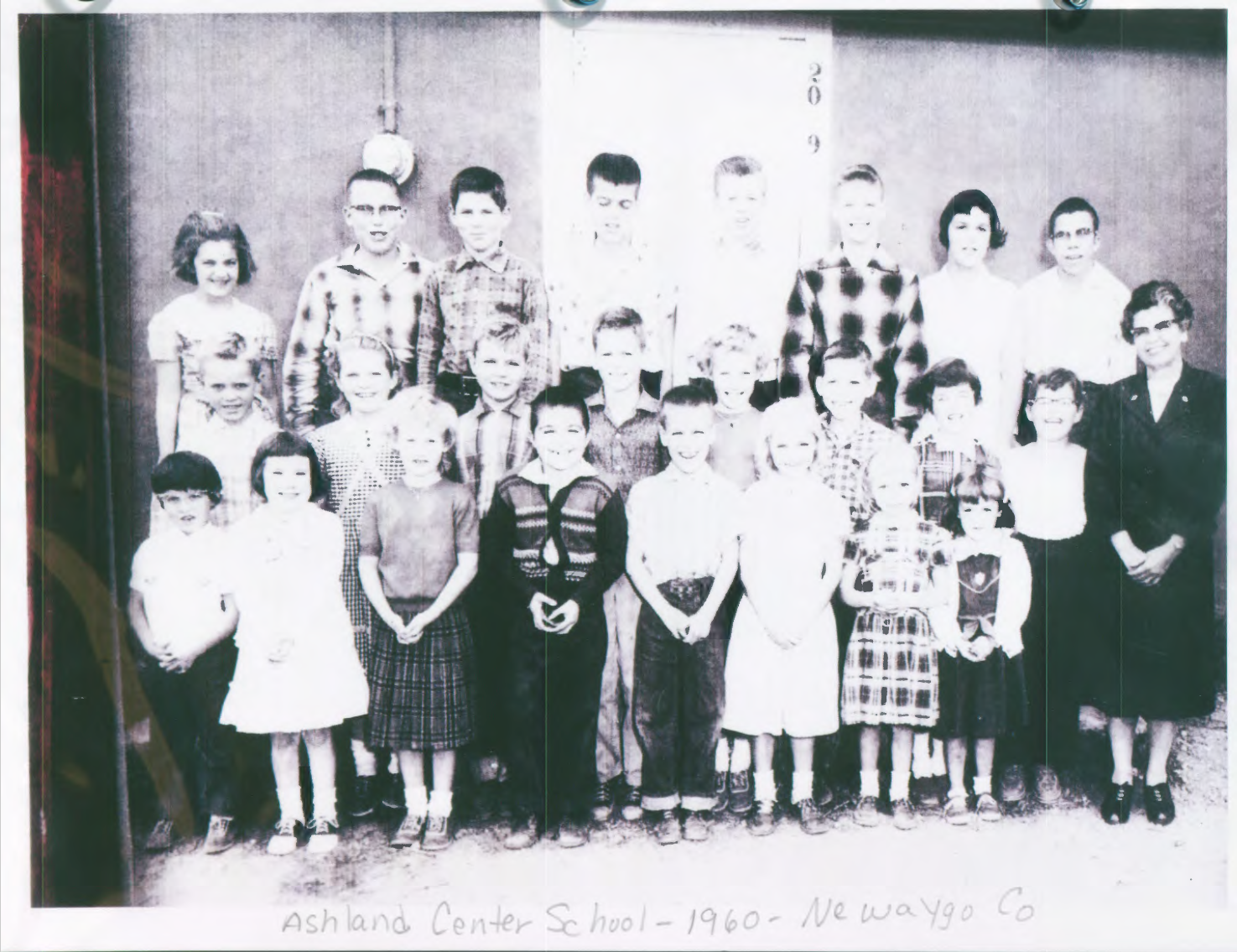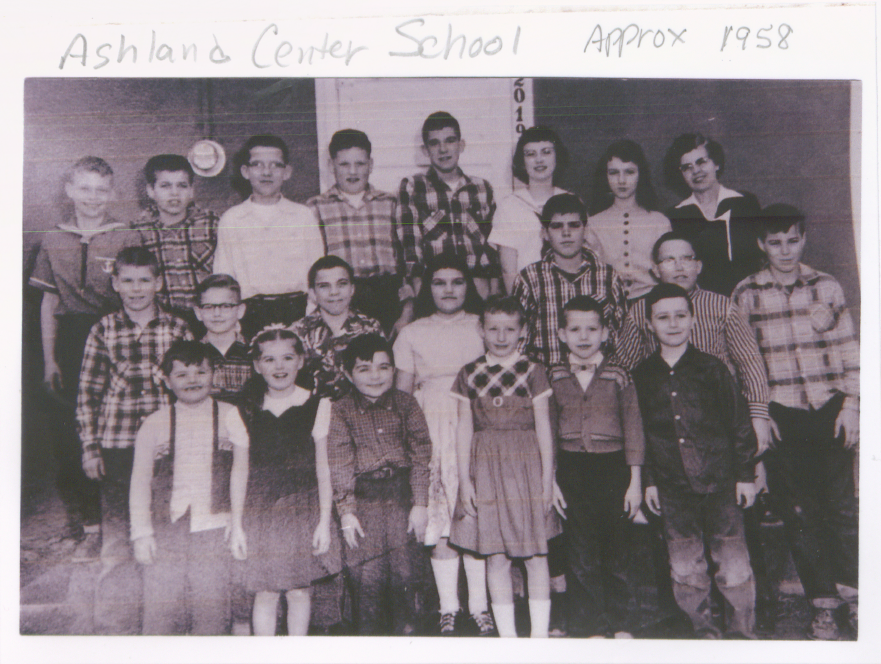
Ashland Township
Featured Story
Ashland Station, Ashland, Grant Station, Grant, Lambson, Ashland Corner, Dickinson, Ashland City and Lake P.O.
By Terry E. Wantz
In 1854, Ashland Township was established from parts of Brooks and Bridgeton Townships. About one mile north-west of where Grant is now located was a small settlement where John Betts Sr. and Charles B. Seaman operated a tavern and a store there. This settlement was a stop on the Grand Rapids, Northport and Newaygo Stage Line which follow the old trail past where the Lambson School stood north to Newaygo. The settlement soon became called Ashland Station and in 1855 John Betts Sr. established the Ashland Post Offices in his store there.
About one half mile north of Ashland Station was another small settlement which was called Lambson. On April 1, 1873 the post office was discontinued at Ashland Station and on April 16, 1873 Joel Fellows re-established the post office in his home, at Lambson, this still being along the Grand Rapids Northport and Newaygo Stage Line. In 1872 the Grand Rapids, Newaygo and Lake Shore Railroad had reached as far as Newaygo and this soon brought needs of the Stage Line to an end. The mail was now being delivered by the trains so in October of 1874, Henry H. Fellows became the Postmaster and moved the office to his home just north of where Grant is now located, near the railroad tracks.
In November of 1876, Mr. Fellows in order to get a store located at this location, offered to resign his Postmastership in favor of Frank Gardner, provided that Mr. Gardner would build a store there. With trains stopping here to drop off the mail a small settlement began to spring up along the railroads In 1892 they change the name of the post office to Grant Station and in 1899 the name was again change to Grant.
About two mile east of Ashland Station was another small settlement in about the center of the township and was called Ashland Center. Sullivan Armstrong who had been appointed the first supervisor of Ashland Township when it was established had a store located there. On May 6, 1879 he established a post office in his store and was appointed the Postmaster. On December 17, 1894, after the Ashland Post Office had change it’s name to Grant Station Post Office, Ashland Center change it’s name to Ashland Post Office. This office was discontinued on April 6, 1904, and the mail then went to Grant.
Two miles south of Ashland Center was another small settlement and this was called Ashland Corners. There never was a post office established at Ashland Corners. Two miles east of Ashland Corners or two miles south of Ashland (later Grant) another small settlement sprang up along the railroad and this was called Ashland City.
In 1860, Renessalaer Brace came from New York and took up a government land grant along the Grand Rapids and Newaygo State Road in Section 30 of what is now Grant Township, Newaygo County. In 1862, he built a large log structure, known as Buck Horn Tavern. In early times this was the only stopping place between the Village of Newaygo and Grand Rapids. At times as many as 14 covered wagons were parked around the Inn as passengers sought rest and a night’s lodging. There was a large hall in the rear where the men slept and a large room upstairs where the women and children slept. A large rack of deer horns from a buck shot by Wesley W. Averill hung on the front of the tavern for many years, hence the name “Buck Horn Tavern”.
On March 19, 1869, Renessalaer Brace established a post office at his Buck Horn Tavern and Inn under the name of “Lake”. A few years later the railroad had been built to Newaygo, and with the mail coming on the trains the Lake Post Office was moved a mile west to be closer to the tracks at Ashland City. Mrs. Sarah Manning was Postmaster of the Lake Post Office when the office was closed on October 2, 1908 with the mail then going to Grant.
You can see how the mail sometimes got sent to the wrong location with four settlement with Ashland in their name. To add to the confusion, when the Dickinson Post Office, located on the western side of Ashland Township was established on May 31, 1888 with William Reiley as Postmaster it was some times called West Ashland. The confusion never ended until all of these offices were discontinued except Ashland, which was located at Ashland Center.
Mrs. Ella Lampman was one of the comparatively few women in the United State who had the responsibility of carrying the mail over an early Star Route. Star Routes now comparatively rare except for direct delivery of mail between cities, are those in rural districts farmed out by the Post Office Department on a competitive-bid basis. They now have generally been replaced by Rural Free Delivery routes.
Mrs. Lampman carried mail with her husband between 1893 and 1900 on routes from Sun P. O. to Grant P. O., from Plumville P. O. to Grant P. O. and from Ensley Center P. O. to Howard City P. O.. She was obliged to “take over” for nearly two years in the severe winter of 1899 when her husband’s eyelids were frozen. She said that his eyes were injured so severely that he eventually became blind.
Many roads were mud tracks then, Mrs. Lampman recalled and even corduroy highways were most unsatisfactory in the spring and winter. Roads seldom were cleared in the winter and often it was necessary in the spring for her to cover her long route by horseback. Ordinarily she used a cutter in the winter and the wagon in the summer.
The couple received from $350.00 to $400.00 a year pay at that time and depended considerably upon carrying school teachers, hunters and other occasional passengers and performing errands in town for the farmers on the route in order to round out their government salary to a living wage.
A Michigan Folk School
“Nestled among the trees by the side of one of Michigan's concrete highways one mile south of Grant and 29 miles north of Grand Rapids stands the oldest folk school in existence in America. This school is now incorporated under the laws of the state of Michigan as Ashland College and is known as “an American Folk School.” It is housed in the building originally used by the Danish immigrants, but the first has passed entirely out of existence.”

















